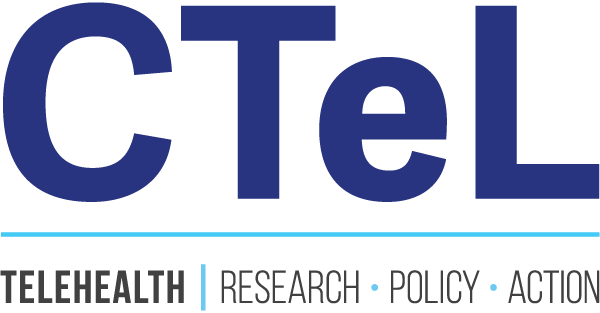Digital Health and Telehealth Funding at Risk Amidst Senate Gridlock
The future of telehealth and digital health funding through Medicaid is facing a period of intense uncertainty and risk, following a key ruling by the Senate parliamentarian that has thrown a wrench into the Republican-led efforts to pass a major budget reconciliation bill. The parliamentarian's decision to strike down a contentious provision altering the state-level "provider tax" has not only stalled the legislative process but has also amplified the political divisions within the GOP, leaving telehealth providers and the millions of Medicaid patients they serve in a precarious position.
The now-blocked provision was a central component of the Senate's plan to generate significant federal savings to offset other expenditures within their "megabill." The proposal aimed to cap the provider tax, which states levy on healthcare providers to generate revenue that is then used to draw down federal matching funds for Medicaid. This mechanism has been a critical tool for states to finance their Medicaid programs, and the proposed changes would have had far-reaching consequences. For instance, the Senate bill proposed to lower the provider tax cap from the current 6% to 3.5% by 2031, a move that would have disproportionately affected states that rely heavily on this funding stream (Chief Healthcare Executive, 2025).
The parliamentarian's ruling that this provision does not comply with the Byrd Rule, which governs what can be included in a reconciliation bill, means that it would now require a 60-vote majority to pass—a near impossibility in the current political climate. This has forced Republican leadership to either rewrite significant portions of their bill or find alternative savings, an endeavor that has proven to be politically fraught.
The Ripple Effect on Telehealth
The implications of this legislative impasse for the digital health and telehealth sectors are manifold and concerning:
Funding Instability and Potential Cuts: The failure to secure the anticipated savings from the provider tax changes creates a significant budget hole that lawmakers may seek to fill by cutting other areas of Medicaid. Telehealth services, which have become increasingly integrated into the healthcare landscape, are vulnerable to these potential cuts. Any reduction in overall Medicaid funding could lead to lower reimbursement rates for telehealth, making it financially unsustainable for many providers. This is particularly concerning given that many Federally Qualified Health Centers (FQHCs) and other safety-net providers are already struggling with low Medicaid reimbursement rates for telehealth, which has been shown to exacerbate workforce shortages, especially among mental health practitioners (Columbia University Mailman School of Public Health, 2025).
Heightened Reimbursement Challenges: The debate over the provider tax is intertwined with the broader and ongoing challenges of telehealth reimbursement. While the COVID-19 pandemic saw a significant expansion of telehealth flexibilities, many of these are temporary and set to expire. The current legislative environment, marked by infighting and a focus on cost-cutting, does little to inspire confidence that a long-term, stable reimbursement structure for telehealth will be a priority. The American Medical Association has been advocating for "payment parity," where telehealth services are reimbursed at the same rate as in-person services, but the lack of robust data on the cost-effectiveness of telehealth has made this a contentious issue (American Medical Association, 2023).
Disparities in Access: The potential for reduced Medicaid funding and unstable reimbursement policies for telehealth could worsen existing health disparities. Rural and underserved communities, which have benefited significantly from the expansion of telehealth, are at particular risk. A reduction in telehealth services could mean a return to the geographic and financial barriers to care that these populations have historically faced. Furthermore, the lack of adequate broadband infrastructure in many of these areas already presents a significant obstacle to telehealth access (Simbo.ai, 2025).
The House-Senate Divide: The legislative path forward is further complicated by the significant differences between the House and Senate versions of the reconciliation bill. The House bill, for instance, includes provisions for Medicaid work requirements that the Congressional Budget Office estimates would lead to 4.8 million people losing their health insurance (KFF, 2025). While the Senate version has some variations, the overall direction of both bills points towards a reduction in Medicaid spending and eligibility. The current stalemate provides an opportunity for these differing and often competing priorities to be debated, but it also prolongs the uncertainty for providers and patients.
The Road Ahead
The parliamentarian's ruling has, in effect, sent lawmakers back to the drawing board. While some see this as an opportunity to reconsider the more drastic proposals and their potential impact on vulnerable populations, the pressure to pass a reconciliation bill by the July 4th deadline remains. The outcome of these negotiations will have a profound impact on the future of digital health and telehealth in the United States. For a sector that has been a beacon of innovation and expanded access to care, the current legislative environment presents a formidable challenge. The stability and growth of telehealth services are now intrinsically linked to the complex and highly politicized debate over the future of Medicaid.
References
American Medical Association. (2023). AMA Issue Brief: Supporting equitable payment for telehealth. Retrieved from https://www.ama-assn.org/system/files/issue-brief-equitable-payment-for-telehealth.pdf
Chief Healthcare Executive. (2025). For hospitals, Senate version of tax bill 'moves in the wrong direction'. Retrieved from https://www.chiefhealthcareexecutive.com/view/for-hospitals-senate-version-of-tax-bill-moves-in-the-wrong-direction-
Columbia University Mailman School of Public Health. (2025). Medicaid Telehealth Reimbursement Policies Are Exacerbating Workforce Shortages in Safety Net Clinics. Retrieved from https://www.publichealth.columbia.edu/news/medicaid-telehealth-reimbursement-policies-are-exacerbating-workforce-shortages-safety-net-clinics
Fierce Healthcare. (2025). GOP hits setback as parliamentarian rules some Medicaid changes don't meet Senate rules. Retrieved from https://www.fiercehealthcare.com/providers/provider-tax-changes-some-medicaid-funding-restrictions-ineligible-reconciliation
KFF. (2025). A Closer Look at the Medicaid Work Requirement Provisions in the “Big Beautiful Bill”. Retrieved from https://www.kff.org/medicaid/issue-brief/a-closer-look-at-the-medicaid-work-requirement-provisions-in-the-big-beautiful-bill/
Simbo.ai. (2025). Telehealth Reimbursement Challenges: Navigating Policies and Barriers to Widespread Adoption. Retrieved from https://www.simbo.ai/blog/telehealth-reimbursement-challenges-navigating-policies-and-barriers-to-widespread-adoption-2929828/

